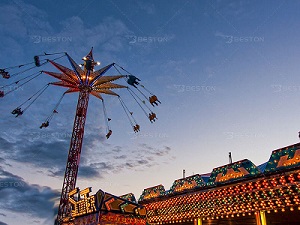


Explores how amusement rides maintain high excitement levels while ensuring strict safety through engineering and regulation.
Amusement attractions have evolved from quaint carousels to towering steel structures that defy gravity and perception. As the appetite for adrenaline intensifies, so too must the diligence in preserving human safety. A paradox emerges: how to elicit visceral excitement without compromising structural integrity or operational reliability.
One of the most emblematic examples of this juxtaposition is the swing tower—a vertical marvel that elevates riders hundreds of feet before spinning them in wide arcs through open air. The thrill stems not only from the height but from the illusion of exposure. Simultaneously, the system must maintain rigid tolerances and fail-safes to prevent disaster.
Similarly, the pendulum amusement ride—known for its colossal, rhythmic swings—channels the principles of kinetic energy to create a sensory overload. Riders are whipped back and forth in a calculated arc that approaches vertical angles. While the visual drama of a pendulum in full motion captivates onlookers, its behind-the-scenes precision is less visible yet vastly more critical.
Designing thrill rides is fundamentally an exercise in controlled chaos. Engineers must consider wind load, torque, material fatigue, and dynamic weight distribution. These rides are subjected to forces comparable to those experienced in aerospace applications. Tolerances are minutely calculated; deviations as minor as a few millimeters can escalate into safety hazards.
Redundancy is a cornerstone. For instance, the restraint mechanisms on a swing tower aren’t just secured—they are over-secured. Primary, secondary, and sometimes tertiary locking systems engage simultaneously. Magnetic sensors verify engagement, and onboard diagnostics perform real-time status checks during every cycle. The illusion of danger exists, but the risk is meticulously minimized.
Safety does not operate in a vacuum. International standards such as ISO 17842 and ASTM F2291 govern the design, manufacturing, and operation of amusement rides. Operators of pendulum amusement ride installations must conduct daily inspections, maintain maintenance logs, and comply with periodic audits.
Emerging technologies, such as non-destructive testing (NDT) and digital twin simulations, now play an integral role. These innovations allow for micro-crack detection and stress analysis long before physical deterioration becomes apparent. The convergence of data analytics and mechanical design enables preemptive maintenance, reducing the likelihood of operational anomalies.
Beyond mechanical and structural safety lies an equally important but less tangible aspect: perceived safety. The architecture of thrill involves manipulating human psychology. Elements such as open seating, minimalistic restraints, and expansive visibility are designed to enhance the fear factor. However, these are carefully curated illusions—engineered to feel dangerous while being statistically secure.
Rider onboarding protocols also contribute to psychological assurance. Verbal briefings, visible safety checks, and standardized operator gestures communicate preparedness and competence. In high-capacity installations like a swing tower, this choreography becomes a spectacle in itself, reinforcing trust before the ride even commences.
Balancing thrill and safety is not about compromise—it is about integration. The pendulum amusement ride does not forgo safety to amplify excitement; instead, it incorporates engineering excellence to enable it. Every bolt, weld, and circuit is part of a broader system calibrated for extreme, repeatable performance.
Operators must be vigilant, not only in mechanical upkeep but in responding to environmental and human factors. Temperature fluctuations, crowd behavior, and even operator fatigue can influence ride safety. A systemic approach—embracing preventive protocols, responsive design, and operational rigor—is essential.
The pursuit of thrill in amusement rides like the swing tower and the pendulum amusement ride demands a concurrent commitment to rigorous safety. Through precision engineering, regulatory adherence, and psychological consideration, the industry continues to deliver pulse-quickening experiences that remain firmly within the bounds of control. True exhilaration lies not in recklessness but in the artistry of calculated risk.
